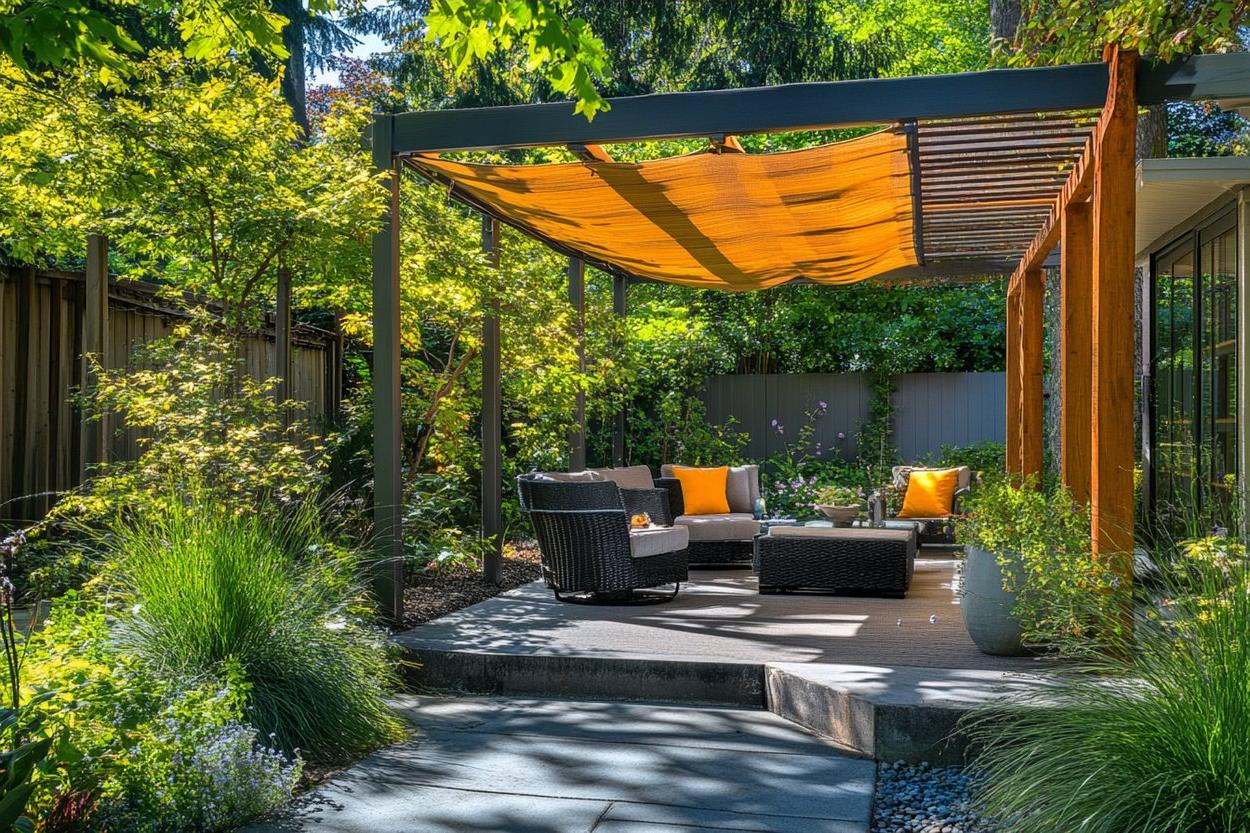Upgrade Outdoor Living with Pergolas: Design & Care
Discover how pergolas can elevate your outdoor living — adding shade, style, and usable space to patios and gardens. This guide covers design options, materials (wood, aluminum, vinyl, steel, stone), ways to create shade and privacy, and practical maintenance tips to keep your pergola looking great for years. Learn how to integrate climbing plants, lighting and adjustable roofs to craft a comfortable, attractive outdoor retreat.

The charm of a pergola lies in its blend of built form and natural beauty. These open-air frameworks—typically made of vertical posts supporting beams and rafters—provide architectural interest while inviting vines and foliage to create a living canopy. As a result, pergolas not only enhance visual appeal but can also moderate temperature and define outdoor rooms. With countless materials and styles available, you can tailor a pergola to echo your home’s architecture and landscape design.
How pergolas deliver shade and comfort
One of the most valued benefits of a pergola is shade. Traditional models with spaced slats cast broken, dappled shade that keeps a space cooler without fully blocking sunlight. If you need stronger protection from sun or rain, modern pergolas often feature retractable canopies, solid roofs, or adjustable louvers that let you change how much light enters the area. Sliding panels and movable slats make it easy to adapt the shelter to different times of day and weather.
In addition to overhead protection, the vertical posts of a pergola are useful for adding privacy and weather control. Outdoor curtains, roll-down screens, or shade cloths can be hung from the beams to block low sun, create a cozy enclosure, or keep insects at bay. Combining these elements allows you to tailor comfort levels without sacrificing the open-air feel.
Styles and material choices
Pergolas can be crafted from a variety of materials to suit both aesthetic preferences and practical needs. Wood remains a popular choice for its warm, organic look. Cedar and redwood resist decay and insects naturally, while pressure-treated pine offers a budget-friendly, durable option. Wood is also easy to customize with decorative cuts, arched tops, or latticework for a more ornate appearance.
For low-maintenance alternatives, aluminum and vinyl pergolas are excellent options. They resist rot and require little more than an occasional wash. Steel is favored when strength and long spans are priorities; powder-coated steel can be finished in many colors and will span wider areas without extra supports. For a classic, substantial look, pair wooden beams with stone or brick columns—this combination suits rustic or Mediterranean landscapes.
Design variations range from minimalist and modern to highly decorative. Consider details like beam end styles, lattice patterns, and arching profiles to ensure the structure complements your home and garden. Choosing the right proportion and finish will help your pergola feel like an integrated part of the property, not an afterthought.
Integrating a pergola into outdoor living
A pergola can do more than provide shade—it helps organize and enhance outdoor activities. Use a pergola to frame an al fresco dining area by placing a table and comfortable chairs beneath it. This naturally defined space encourages gatherings and makes outdoor meals feel intentional.
Alternatively, arrange seating and textiles—sofas, cushions, an outdoor rug—to create a backyard living room. Hanging string lights, lanterns, or pendant fixtures from the beams adds ambiance for evenings and extends the usable hours of your outdoor space. If you enjoy gardening, train climbing plants such as wisteria, clematis, or grapevines along the rafters; over time they form a lush, seasonal canopy that improves shade and aesthetic appeal.
Care and maintenance to extend lifespan
How much upkeep a pergola needs depends largely on the material. Wooden structures benefit from regular care: cleaning, sealing, or staining every few years protects against moisture and sun damage, while inspections for rot or insect activity allow you to address problems early. Keep wood finishes up to date in climates with high humidity or strong sun exposure.
Low-maintenance materials like aluminum and vinyl typically require only periodic cleaning with mild soap and water to remove dirt and pollen. Steel pergolas may need occasional touch-ups to their protective coatings—especially in coastal areas where salt air can accelerate corrosion.
For any type of pergola, removing accumulated debris (leaves, twigs) from the roof and fasteners helps prevent water trapping and structural strain. If climbing plants are in use, prune them regularly to avoid excessive weight and to maintain airflow around the beams. These simple maintenance steps preserve appearance and ensure safety, extending the life of your investment.
Conclusion
Pergolas are versatile additions that combine architectural interest with functional outdoor living benefits. Whether your goal is to create shaded dining or lounging areas, support climbing plants, or add a focal point to your landscape, there’s a pergola style and material to match. Thoughtful design choices—such as adjustable roofs, privacy screens, and complementary materials—paired with routine maintenance will keep your pergola attractive and durable for years. With the right planning, a pergola can transform your yard into a comfortable, stylish retreat that you’ll enjoy across the seasons.






